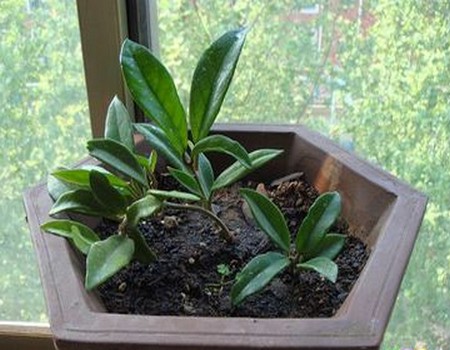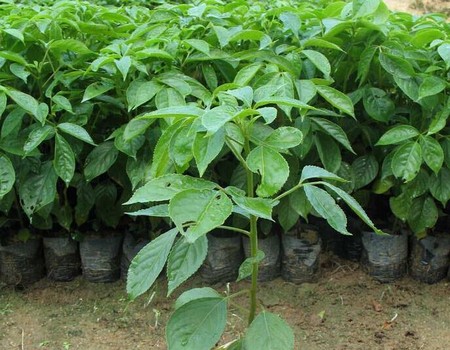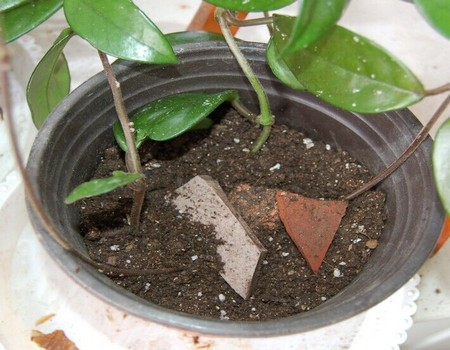Cutting propagation technique of Hoya grandiflora and matters needing attention after cutting
The cuttage method is used to propagate and raise seedlings, and the cuttings can be carried out at all times except in winter and early spring because of low temperature, and it is more suitable to propagate by cutting method from March to April every year.
Ball orchid cutting propagation, try to use your imagination, if there is a lack of flowerpots and plastic bags, a lot of things at hand can be used. For old plastic water cups and coffee cups, don't forget to punch a few drainage holes and you can do it with a match. Soda soda bottles can be made into miniature greenhouses, as long as the top is removed and buckled upside down on the flowerpot. Table top: the small incubator is suitable, and the one with heating is better; if you want to cut in large numbers, you need to invest some money.

There are many ways to take root after cutting, some people use blisters, some people use solid media, the most effective method is to use solid media. Mix with one part of peat moss or peat soil, one part of vermiculite and one part of small expansive clay (ceramsite). The cuttings should let the wound dry fully before cutting, insert the cuttings, let the bottom two leaves touch the surface of the medium, cover the basin with a plastic bag to increase humidity, and don't forget to make one or two ventilation holes in the plastic bag.
If there are flower buds on the ball orchid cuttings, some people suggest that they should be removed, thinking that it will hinder rooting. Usually the flower buds on the unrooted cuttings will fall off by themselves, but if you leave it alone, it may eventually blossom. My advice is to leave it alone and have little effect on the cuttings.
When the cuttings take root and begin to grow, they should be replanted into the final cultivation container. Don't be too big. The flowerpot would rather be smaller than big. Too large flowerpots will cause plants to keep growing roots, affecting stem and leaf growth and flowering.
Ball orchid seedlings are thin and weak, grow slowly, require careful management and protection, prevent sun and rain, shade and often stay in spray to moisturize. Most of the plants cultivated indoors are not fruitful, and cuttings and striping methods are often used in production. Cuttings can be carried out all the time except in winter and early spring, which are not suitable for low temperature. The old stem of 2012 and the tender stem of the same year can be used as cuttings with 2 nodes per panicle, with or without leaves, inserted into loose soil containers or flowerpots to keep them moist under shade. It can be rooted in 15 ~ 20 days and cultivated for about 3 months. the container seedlings need to be moved to a larger flowerpot. Seedlings cut in flowerpots can no longer be transplanted. The striping was carried out in the peak growth period of 5 ~ 8 parts, and the near top of the tender stem was selected and pressed into the soil at the node bud. After about half a month, the root system was well developed, and the effect was faster.
Ball orchid one-or two-year-old stems and current year's tender stems can be used as cuttings, cut into a section of 5cm and 8cm, leaving 2 nodes, and cut off the leaves inserted into the matrix, leaving only 1 leaf and 2 leaves. After the wound is fully dried, the cuttings are inserted into the sand bed or the soil loose flowerpot matrix 1Univer 3 or 1pm 2 part cultivation. If it is 180 flowerpots, about 10 cuttings can be inserted in each pot.
In addition, the breeding method of orchid can also be propagated by sowing. Follicles mature gradually from August to December, with hairy seeds. Seeds that mature in summer and autumn should be sown as they are picked. Seeds collected in autumn and winter can be stored until the following spring is warm and sown.
The cuttings had better be cut and inserted in order to survive, and the light was strong from April to June. In order to maintain the cool environment, two layers of black gauze net could be set up, and the cuttings could take root in about 20 days, and new leaves would grow after one month. After the roots were well developed, they could be transplanted to larger flowerpots and then moved to the semi-overcast ventilation place for routine management.
Although ball orchid can be cut except in winter, the situation that needs to be paid attention to is different in different seasons. This paper takes flower friends to see what are the main points for attention in autumn ball orchid cutting, which can be used as a reference for flower friends cutting ball orchid.
1. Plant material: in autumn, the temperature decreases gradually, and the temperature difference between day and night increases. Therefore, it is more suitable for plant cutting, and hydroponic culture is not recommended. If you are an old hand, you should say otherwise. Because the temperature is low and the hydroponic culture takes root for a long time, not to mention testing people's patience, it is also easy to have some accidents because of water quality problems. Compared with water cutting, plant cutting can ensure that the root has enough temperature, which is beneficial to rooting. You can choose vermiculite, peat or the mixture of the former two and perlite with good heat preservation and humidity. Of course, the best thing is to use the plant material you are used to (vegetarian material, of course) rather than what I recommend.
2. Watering: because the temperature will drop slowly, the watering frequency should be reduced. Take vermiculite as an example: 30x15cm long strip basin, vermiculite height 6cm, such a cutting basin, 10-15 days can be watered once. When the water is large, it is not easy to take root, even if it takes root, it is also easy to cause rotten roots. It is also mainly due to the low temperature, the decrease of transpiration and the weakening of root water absorption. If the root system is too wet at low temperature, root damage is inevitable. If the plant is looser, it is good for rooting.
3. Lighting: the cutting pot does not need strong light, as long as it is placed in a place with scattered light and good ventilation. It's best not to put it where the wind blows directly. To prevent the sudden drop in temperature caused by wind blowing in a small area to affect the cutting effect.
4. Rooting time: cuttings take root slowly in autumn. Take vermiculite as an example, general branches need half a month to one month to take root in the basin, and the root system is not as developed as in spring and summer, but there is no problem in the pot.
5. Common problems of cutting failure in autumn: too young branches (cutting needs more than one year of branches), excessive humidity of plant material, unhealthy branches, cold root system in the process of cutting, fertilizer content of plant material, poor permeability and water use of plant material, and so on.
Time: 2019-06-11 Click:
- Prev

Sowing and Propagation techniques of Phoenix Tree
Phoenix wood, alias Fenghuanghua, Huoshu, Leguminosae. Phoenix wood, as an excellent garden ornamental tree and street tree species, is widely planted in the south. Its beautiful branches and leaves, clusters of safflower, dazzling, loved by local landscaping departments. For this reason, we observed the growth law of Phoenix wood.
- Next

Breeding method of orchids
Growing hoya is a simple matter, and the rate of return is very high. Although some varieties grow slowly, most grow vigorously and flower easily. The external characteristics of the marsh vary greatly, some like small bushes, some are Spider-Man with large leaves. Unlike most common plants, bulbs always flower on the same pedicel.
Related
- Fuxing push coffee new agricultural production and marketing class: lack of small-scale processing plants
- Jujube rice field leisure farm deep ploughing Yilan for five years to create a space for organic food and play
- Nongyu Farm-A trial of organic papaya for brave women with advanced technology
- Four points for attention in the prevention and control of diseases and insect pests of edible fungi
- How to add nutrient solution to Edible Fungi
- Is there any good way to control edible fungus mites?
- Open Inoculation Technology of Edible Fungi
- Is there any clever way to use fertilizer for edible fungus in winter?
- What agents are used to kill the pathogens of edible fungi in the mushroom shed?
- Rapid drying of Edible Fungi

